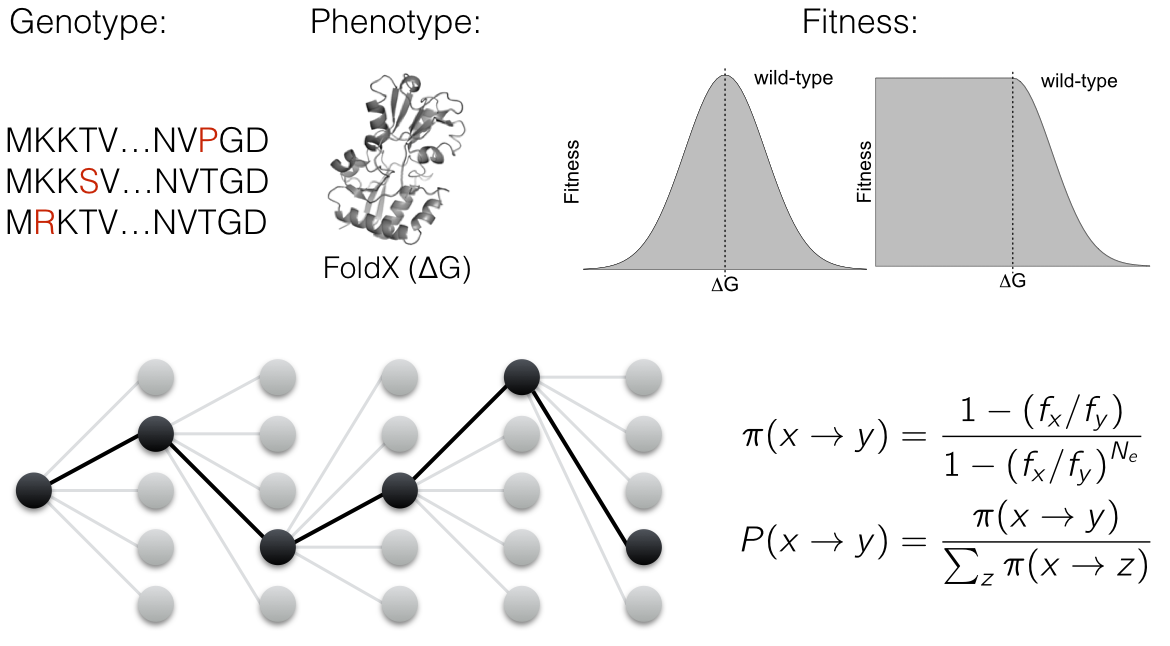The phenotypic effect of a mutation at one genetic site often depends on alleles at other sites, a phenomenon known as epistasis. As a result, any mutation is expected to be contingent on earlier mutations and the fate of this mutation depends on the evolutionary history of the population. Therefore, epistasis can profoundly influence the process of evolution in populations and shape the patterns of divergence across species. Understanding the nature of epistatic interactions between sites will allow us to address basic questions in biology at the molecular scale – such as how large a role does history play in evolution? Do later events depend critically on specific earlier events, or do all events occur more or less independently?
We have explored the role of epistasis in the context of protein evolution. Models of protein evolution typically assume that each site in a sequence evolves independently. Nevertheless, the role of epistasis between sites during protein evolution is increasingly recognized as important, even though methods to infer epistasis are actively debated. By using models of protein stability within a population-genetic framework, we have shown that amino-acid substitutions are typically contingent on the presence of prior substitutions, and that substitutions that occur early in evolution become entrenched and difficult to modify as subsequent substitutions accrue. Such models provide key insights into the structure of a protein’s fitness landscape and the effects of historical contingency on protein evolution.
